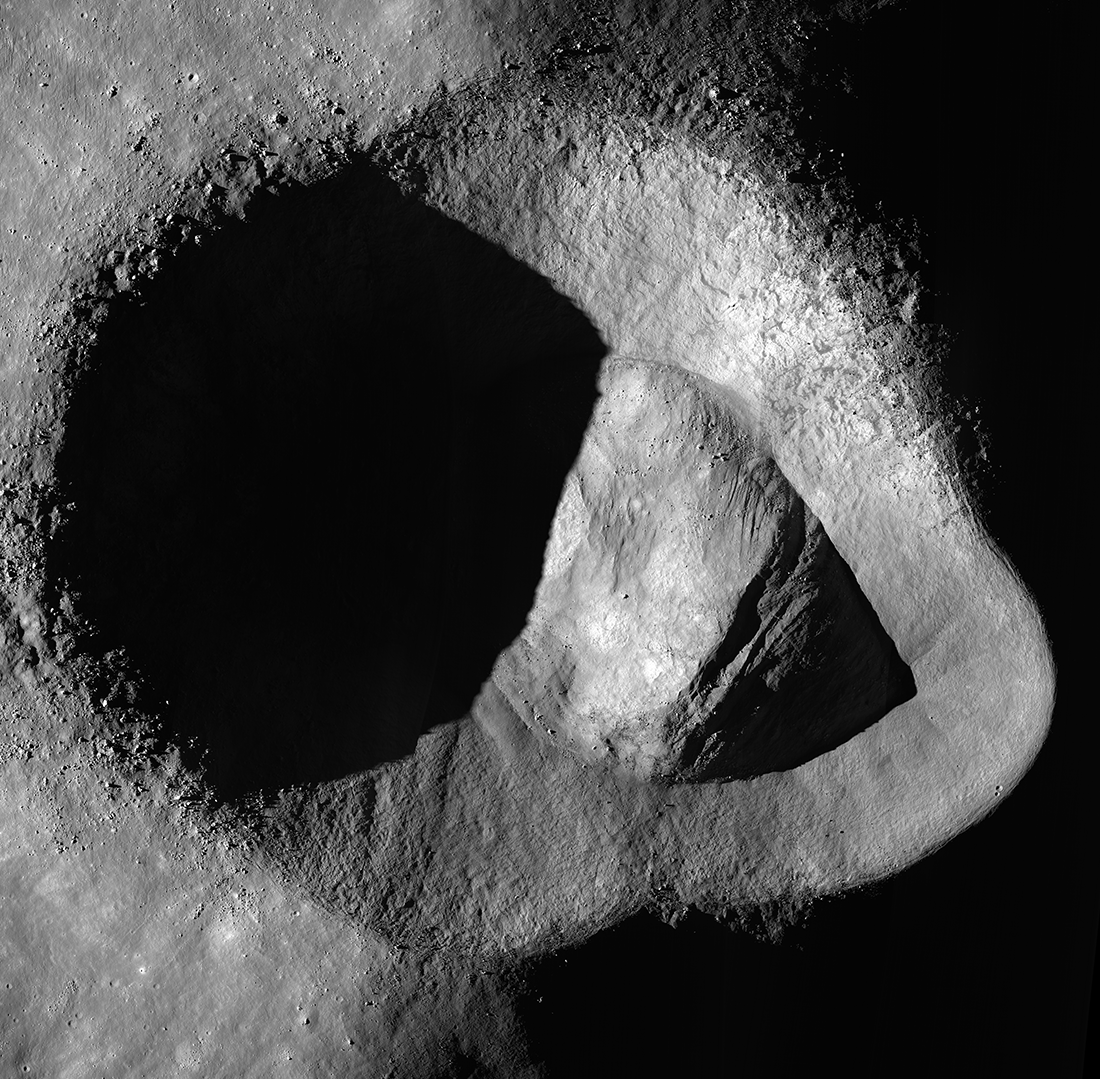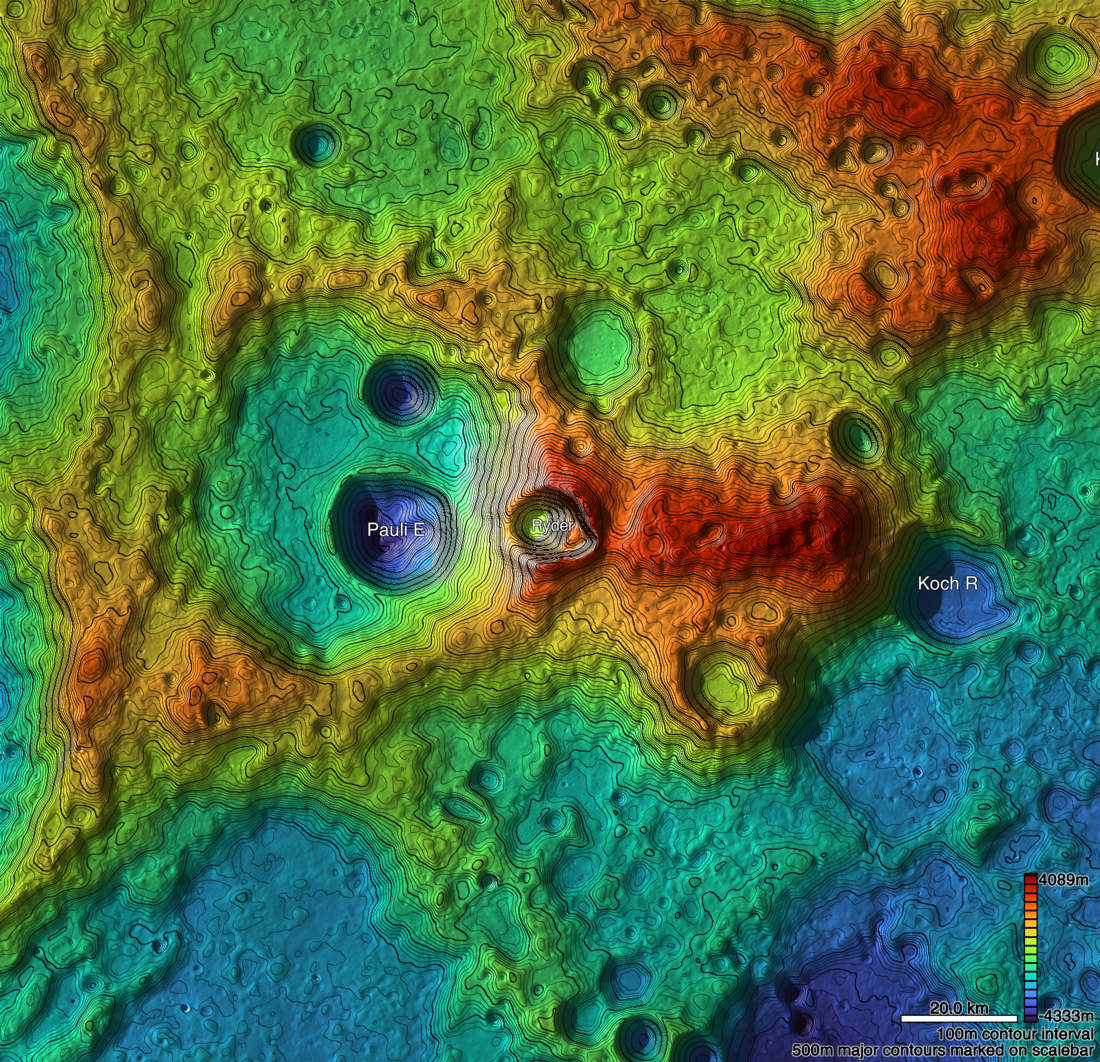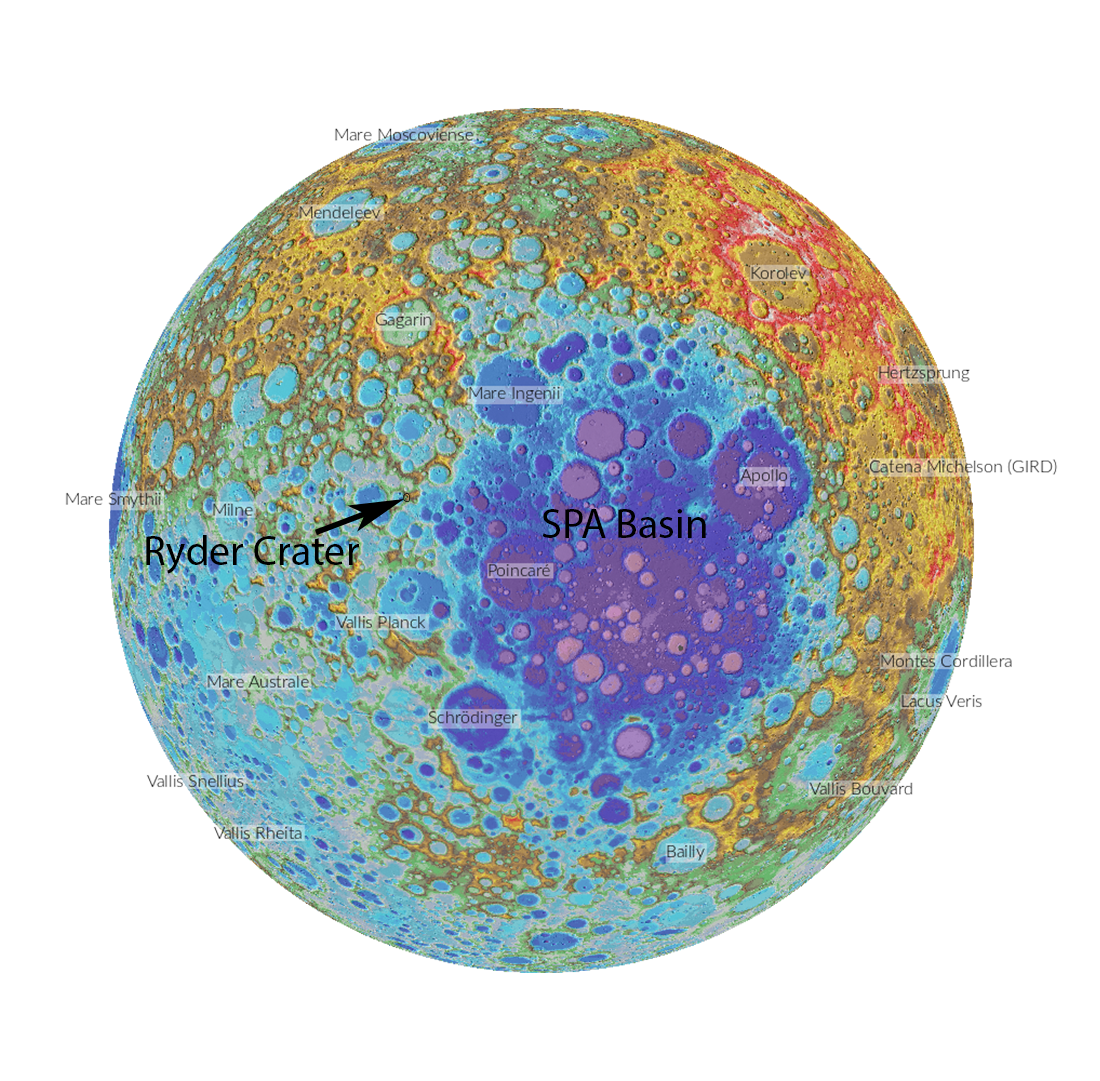
Ryder crater is oblong (13 x 17 km), with a distinctive slump on its eastern side, and is located in the South Pole–Aitken (SPA) Basin, which is the largest (roughly 2,500 km in diameter) and possibly oldest (estimated age of 4.3 billion years) basin on the Moon.
Because of its odd shape, some question whether Ryder is two craters or one. This distinctive landform could have formed when an impactor struck the surface at a grazing angle (<15° from the horizon), or when an asteroid split in two just before impact (both of these cases are on view at the Messier crater complex). However, there is another factor at play here: Ryder crater formed on a steep ridge, and this kind of uneven terrain is often responsible for asymmetric craters.

The steep ridge upon which Ryder formed is the degraded rim of an older crater that is ~70 km across, with a vertical drop of over 3000 meters (approximately 10,000 feet) from its rim to its floor. Even this older crater may have been affected by the uneven terrain on which it formed – its eastern rim appears to have formed on a topographic high perhaps related to the SPA basin, leaving it well above its western rim. Thus the impactor that formed Ryder crater struck the very highest point of the older crater's rim, and in this case it is not hard to imagine that the final shape of Ryder crater was strongly affected by its lucky (or unlucky?) encounter with the extra steep slope. The high point of Ryder's rim is approximately 1500 meters (5000 feet) higher than the low point of its rim!

Ryder Crater was named after Graham Ryder, a lunar scientist who worked at the Lunar and Planetary Institute and the NASA Johnson Space Center, unraveling the secrets of lunar geology through detailed analyses of Apollo samples. Given his unique and important contributions to lunar science, it is fitting that such a striking crater bears his name.
Zoom into the full-resolution mosaic of Ryder crater below.
Related Feature Images:
Ryder Spectacular!
Splish Splash
Double Trouble: Messier A
The View Inside of a Tilted Crater
Rim on a Rim
Want to download this Feature Mosaic?
Ryder Crater
Want to learn more about controlled mosaics?
Feature Mosaics: Behind the Seams
Published by Alyssa Bailey on 19 October 2020